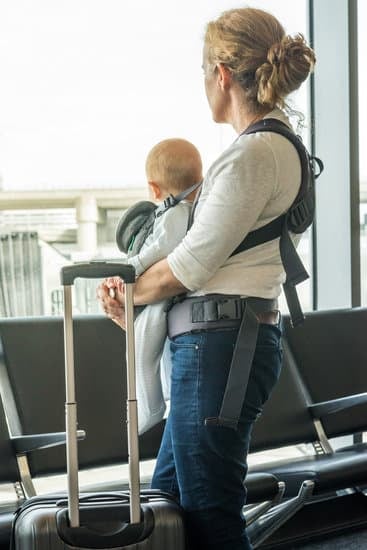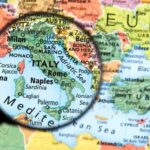Italy, known for its rich history, art, and cuisine, has always been a popular travel destination. However, with the ongoing COVID-19 pandemic, international travel has faced significant restrictions.
For those planning to visit Italy or dreaming of their next Italian adventure, it is crucial to understand the current travel restrictions in place.
This article aims to provide an in-depth understanding of the travel restrictions to Italy, including the history of such restrictions, the current scenario, Italy’s entry requirements, categories of travelers allowed amidst the restrictions, exemptions and special circumstances allowing travel, resources for staying updated on travel advisories, and tips for preparing and traveling safely during these challenging times.
To grasp the full picture of Italy’s current travel restrictions, it is essential to delve into their history. By briefly examining how Italy responded to the pandemic over time, we can better understand the reasoning behind their current policies. Additionally, exploring the specifics of these policies will help travelers gain clarity on what they can expect when planning a trip to Italy.
One important aspect regarding travel to Italy amidst these restrictions is understanding Italy’s entry requirements. This includes knowing what documentation and procedures are necessary for entry into the country. Whether it be COVID-19 test results or vaccine certificates, being aware of these requirements beforehand can save travelers from unexpected obstacles upon arrival.
In summary, this article aims to be a comprehensive guide for navigating the travel restrictions currently imposed on those wanting to visit Italy. By thoroughly examining each aspect outlined above – from understanding the history and basis of these restrictions to providing tips for traveling safely – readers will be equipped with valuable knowledge enabling them to plan their trips responsibly and confidently during these uncertain times.
History of Travel Restrictions
Italy was one of the first countries in Europe to be severely impacted by the COVID-19 pandemic. As the virus spread rapidly within its borders, Italy implemented strict travel restrictions to mitigate the spread and protect its population. Understanding the history of travel restrictions in Italy provides valuable context for the current situation.
In February 2020, as cases began to surge, Italy took swift action by implementing a nationwide lockdown. This resulted in the closure of schools, universities, and non-essential businesses, along with strict limitations on movement and travel. These initial measures were crucial in controlling the spread of the virus and preventing further outbreaks.
As the situation improved throughout 2020, Italy gradually eased its travel restrictions. In June, it reopened its borders to travelers from European Union countries and allowed for unrestricted movement within most regions. However, sporadic outbreaks led to localized lockdowns in certain areas. These regional restrictions were lifted over time as infection rates decreased.
In late 2020 and early 2021, Italy experienced a resurgence of COVID-19 cases, prompting the government to reimpose travel restrictions. This included a ban on non-essential travel between regions during weekends and national holidays. Additionally, international travelers were required to provide proof of a negative COVID-19 test taken within 48 hours before entering Italy.
| Date | Event/Restriction |
|---|---|
| February – May 2020 | Nationwide lockdown: Closure of schools, businesses; strict limitations on movement |
| June – October 2020 | Reopening of borders to EU travelers; easing of regional restrictions |
| November – December 2020 | Resurgence of cases; ban on non-essential travel between regions; mandatory COVID-19 test for international travelers |
By understanding the history of travel restrictions in Italy, travelers can navigate the current scenario more effectively and plan their trips accordingly. It is important to stay updated on the latest developments and guidelines issued by the Italian government and health authorities to ensure a safe and compliant journey.
Current Scenario
Italy has implemented several travel restrictions to control the spread of COVID-19. It is essential for travelers planning a trip to Italy to understand the current scenario and the specific travel restrictions in place.
- Testing Requirements: All travelers entering Italy, regardless of their country of origin, must undergo a molecular or antigen test within 48 hours before their arrival. The test result must be negative for COVID-If the test result is positive, travelers will be denied entry and required to self-isolate in line with the Italian health protocols.
- Quarantine Measures: Travelers arriving in Italy are subject to quarantine measures based on their country of departure. Countries are divided into different categories (C/C1/C2/C3) based on their epidemiological situation. Currently, most countries fall under the C category and require travelers to undergo a 5-day quarantine upon arrival.
- Digital Passenger Locator Form: Before traveling to Italy, all visitors must complete a digital passenger locator form (dPLF). This form includes personal information as well as details about the planned stay in Italy. Travelers can fill out this form online and should carry a digital or printed copy while traveling.
- Restrictions on Entry from Certain Countries: Italy currently has specific restrictions on entry for arrivals from high-risk countries, including Brazil, India, Bangladesh, and Sri Lanka. These restrictions may include additional testing requirements or temporary bans on direct flights.
It is crucial for travelers to regularly check official sources such as the Italian Ministry of Foreign Affairs and the Embassy of Italy in their home country for updates on travel restrictions and requirements. It is also recommended to consult with airlines or travel agents for any changes or additional measures that may apply during transit or at your destination airport.
Though these travel restrictions may seem stringent, they are necessary precautions taken by authorities to safeguard public health during the pandemic. By being aware of and adhering to these restrictions, travelers can ensure a safer and smoother travel experience to Italy.
Italy’s Entry Requirements
When planning a trip to Italy during the pandemic, it is important to understand the entry requirements set by the Italian government. These requirements aim to ensure the safety and well-being of both residents and travelers. By familiarizing yourself with the necessary documentation and procedures, you can better prepare for your trip and minimize any potential disruptions.
To enter Italy, all travelers must complete a self-declaration form which includes information about their health status, contact details, and their reason for traveling. This self-declaration can be obtained online or through mobile applications and must be presented upon request by authorities. Additionally, travelers may be subject to health screening measures such as temperature checks upon arrival in Italy.
Along with the self-declaration form, there are specific documentation requirements depending on your country of origin. Travelers from countries within the European Union (EU), Schengen Area, or United Kingdom do not need to provide any additional documents beyond their passport or identification card.
However, travelers from non-EU countries are subject to additional requirements. They must present a negative COVID-19 test result taken within 48 hours before entering Italy. The test must be either a molecular (PCR) or antigenic test and should include specific information such as your name, date of birth, type of test conducted, and result.
Furthermore, non-EU travelers are also required to adhere to a mandatory ten-day quarantine upon arrival in Italy. During this period, they must follow strict rules including staying at their declared accommodation and limiting social interactions.
Understanding these entry requirements is crucial for a smooth travel experience to Italy during the pandemic. By preparing all necessary documentation beforehand and following the outlined procedures, you can ensure compliance with Italian regulations while enjoying your visit.
| Entry Requirement | Necessary Documentation |
|---|---|
| Self-Declaration Form | Completed online or through mobile applications |
| COVID-19 Test Result | Negative result from a molecular (PCR) or antigenic test taken within 48 hours before entry |
| Ten-Day Quarantine | Strict adherence to quarantine rules, including staying at declared accommodation and limiting social interactions |
Categories of Travelers
Italy has implemented specific categories of travelers who are allowed to enter the country amidst the current travel restrictions. It is important for individuals planning to travel to Italy to understand these categories in order to determine their eligibility and comply with the necessary requirements.
- Italian Citizens and Residents: Italian citizens and residents are allowed to enter Italy without any restrictions. They must provide a valid identification document, such as an Italian passport or residence permit, upon arrival.
- EU and Schengen Area Countries: Travelers from European Union (EU) and Schengen Area countries are also permitted to enter Italy. They should present a negative COVID-19 test result taken within 48 hours before their arrival or undergo testing upon arrival. Additionally, they must self-isolate for 14 days unless they obtain a negative test result within 72 hours after entering Italy.
- Essential Reasons: Non-EU and non-Schengen Area travelers may be eligible to enter Italy if they have essential reasons for their travel. These reasons include work, health emergencies, study purposes, returning residents, or absolute urgency situations. Travelers falling under this category must apply for a special authorization from the Italian embassy or consulate in their country of origin.
- Transit Passengers: Travelers transiting through Italy without leaving the international transit area of an airport do not need a valid reason for their travel but must follow all necessary health protocols at the airport.
It is important to note that these categories may change over time, depending on the evolving situation of the pandemic. It is recommended for travelers to consult official sources such as the website of the Ministry of Foreign Affairs or contact their local Italian Embassy or Consulate for the most up-to-date information before planning their trip.
Furthermore, regardless of which category a traveler belongs to, it is essential to respect and comply with all health regulations set by both Italy and one’s home country in order to ensure public safety during these challenging times. It is recommended to practice social distancing, wear face masks, maintain good hand hygiene, and follow any additional guidelines or restrictions imposed by local authorities in Italy.
Exemptions and Special Circumstances
While Italy has implemented travel restrictions due to the ongoing pandemic, there are certain exemptions and special circumstances where travel to the country is still permissible. It is important to understand these instances before planning your trip to avoid any inconvenience or disappointment.
One category of exempted travelers includes Italian citizens and residents. They are allowed to enter the country, but may still be subject to health screenings and quarantine requirements upon arrival. Additionally, individuals who have proven work-related reasons, health emergencies, or urgent family reasons may also be eligible for entry into Italy.
Tourists from countries outside the European Union (EU) are subject to stricter regulations. However, there are exceptions for those traveling from safe countries with low COVID-19 transmission rates. The specific list of safe countries can differ, so it is necessary to check with the Italian Embassy or Consulate in your home country for the most up-to-date information.
Moreover, certain professional categories such as diplomats, healthcare workers, transport personnel, and seasonal workers are also exempt from travel restrictions. These individuals play crucial roles in ensuring essential services continue despite the limitations imposed by the pandemic.
It is worth noting that even if you fall under an exemption category, you may still need to fulfill additional requirements such as presenting a negative PCR COVID-19 test result or undergoing quarantine upon arrival. Therefore, it is essential to consult official sources such as government websites or trusted travel advisories for accurate information on current exemptions and special circumstances allowing travel to Italy amidst these restrictions.
Travel Advisory
Official Government Websites
One of the best resources for staying updated on the latest travel restrictions to Italy is through the official government websites. The Italian Ministry of Health and the Italian Ministry of Foreign Affairs both provide comprehensive and up-to-date information on travel regulations, entry requirements, and any changes to the restrictions. These websites are typically available in multiple languages, making it easier for international travelers to access the necessary information.
Travel Advisory Organizations
In addition to government websites, there are various travel advisory organizations that offer valuable information about travel restrictions to Italy. These organizations closely monitor the situation and provide real-time updates to help travelers make informed decisions. Two prominent examples are the World Health Organization (WHO) and the Centers for Disease Control and Prevention (CDC). Both organizations regularly publish travel advisories that outline current guidelines for visiting countries affected by the pandemic, including Italy.
Embassy or Consulate Offices
Another useful resource for staying updated on travel restrictions is your country’s embassy or consulate offices in Italy. These offices often have dedicated sections on their websites that provide important information and guidance for citizens traveling abroad during the pandemic.
They may also offer additional services such as emergency assistance or evacuation plans in case of unforeseen circumstances. It is advisable to register with your embassy or consulate office before traveling so they can keep you informed about any significant changes or developments regarding travel restrictions to Italy.
By regularly checking these resources and staying informed about the latest updates, travelers can navigate through the ever-changing landscape of travel restrictions more effectively and plan their trips accordingly. It is crucial to note that regulations and requirements can vary depending on factors such as vaccination status, country of origin, purpose of visit, and local COVID-19 conditions.
Therefore, it is always recommended to verify all information with multiple sources and consult with relevant authorities before finalizing any travel arrangements.
Preparing for Travel
Research and Stay Updated on Travel Restrictions
Before traveling to Italy during the pandemic, it is crucial to research and stay updated on the current travel restrictions. The situation can change rapidly, so it is important to have the most accurate and up-to-date information. Keep in mind that different regions within Italy may have varying travel restrictions, so be sure to check for any specific guidelines or requirements for your intended destination.
One reliable source of information is the official website of the Italian Ministry of Foreign Affairs or the Italian Embassy/Consulate website in your country. These sources provide comprehensive details regarding the latest entry requirements, quarantine measures, and travel advisories. Additionally, you can also visit the websites of reputable international organizations such as the World Health Organization (WHO) or the Centers for Disease Control and Prevention (CDC) for general guidance and updates on COVID-19-related travel restrictions.
Get Travel Insurance
Traveling during a pandemic carries certain risks. It is advisable to obtain comprehensive travel insurance that covers medical expenses, trip cancellations or interruptions, and emergency evacuation. Look for policies that specifically include coverage related to COVID-19, such as medical treatment if you contract the virus while abroad.
It’s important to carefully read through your policy’s terms and conditions to fully understand what is covered and any exclusions related to pandemics. Some insurance providers may offer additional coverage options tailored specifically for unforeseen circumstances related to COVID-19.
Follow Health and Safety Guidelines
While traveling in Italy during the pandemic, it is essential to follow health and safety guidelines set forth by local authorities. These guidelines may include wearing face masks in public spaces, practicing physical distancing, frequent handwashing or sanitizing, avoiding crowded places, and adhering to any testing or screening protocols at airports or other entry points.
Be prepared by carrying enough masks, hand sanitizers with at least 60% alcohol content, and disinfectant wipes. Familiarize yourself with the specific guidelines in place at your destination and ensure you have the necessary supplies to comply with them.
Conclusion
In conclusion, navigating the travel restrictions to Italy can be a complex process, but with the right information and preparation, it is possible to plan your trip successfully. It is important to stay updated on the latest travel advisories and regulations issued by both the Italian government and your home country’s authorities. The history of travel restrictions in Italy has shown that these measures are constantly evolving in response to the pandemic situation.
To travel to Italy during this time, it is crucial to understand and comply with the entry requirements set by the Italian government. This includes providing necessary documentation such as negative COVID-19 test results or vaccination certificates, as well as adhering to mandatory quarantine protocols if required.
The categories of travelers who are currently allowed entry into Italy may vary depending on factors such as citizenship, purpose of travel, or country of departure. These categories may be subject to change, so it is essential to verify your eligibility before making any travel plans.
While there are exemptions and special circumstances where travel to Italy may be permissible for certain individuals, it is important to carefully evaluate whether your situation falls within these exceptions. Consulting with relevant authorities or seeking professional advice can help clarify any doubts you may have regarding your eligibility.
In order to plan your trip effectively and minimize potential risks during the pandemic, it is advisable to consider various factors such as healthcare infrastructure at your destination, availability of necessary services and amenities, local COVID-19 guidelines and precautions, as well as potential changes in regulations during your stay.
It is crucial for travelers to take responsibility for their own health and safety by following recommended guidelines such as wearing masks, practicing good hygiene habits, maintaining social distancing when possible, and avoiding overcrowded areas. By staying informed about the latest developments regarding travel restrictions in Italy and taking necessary precautions throughout their journey, travelers can navigate this challenging period while still fulfilling their desire for exploration and discovery in beautiful Italy.
Frequently Asked Questions
What is needed to travel to Italy from the US?
To travel to Italy from the US, there are a few things that are needed. First and foremost, a valid passport is required for all US citizens. It is important to ensure that the passport is not expired and has at least six months’ validity beyond the intended duration of your trip. Additionally, US citizens may need a visa to enter Italy depending on the purpose and length of their stay.
It is recommended to check with the Italian embassy or consulate for specific visa requirements. Travelers should also consider obtaining travel insurance, as it can provide coverage for any unexpected incidents during their trip. Lastly, arranging transportation such as booking flights or organizing ground transportation in Italy will be necessary to reach the country.

I’m a passionate traveler, writer, and Italophile. My fascination with Italy’s history, art, and culture has led me on countless adventures across the Italian landscape. Through “I Live Italy,” I share my love for this extraordinary country and aims to inspire others to explore its boundless beauty.





